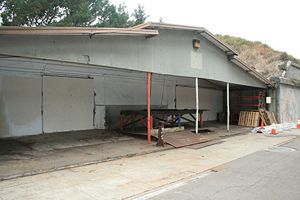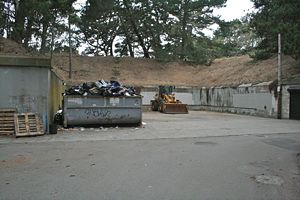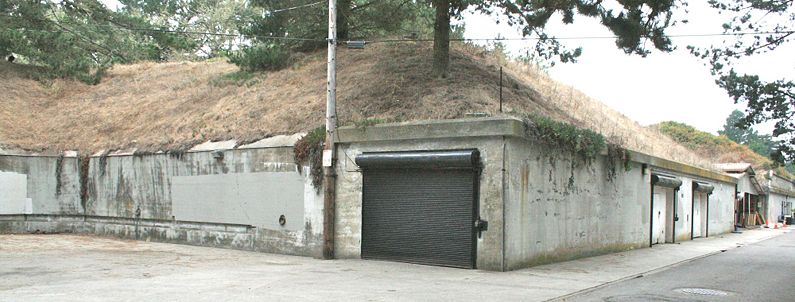Battery Springer
|
Battery Springer (1906-1942) - Battery Springer was a reinforced concrete, Endicott Period 12 inch coastal mortar battery on Fort Miley, San Francisco County, California. Originally built as mortar pits C & D of Battery Livingston in 1899, these two pits were re-designated as Battery Springer in 1906. General Order 20, 25 Jan 1906, named the C and D mortar pits Battery Springer after Capt. Anton Springer (Cullum 3664), 1st U.S. Infantry, who was killed in action near Lipa, Luzon, Philippine Islands, 10 Jun 1901. Mortar pits A and B retained the Battery Livingston name. Deactivated in 1942.
Endicott Period (1890-1910)Part of the Harbor Defense of San Francisco.
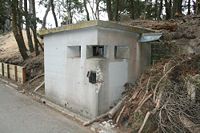 Originally built as an Endicott Period concrete coastal mortar battery with sixteen 12" M1890MI mortars mounted on M1896MI mortar carriages divided into four mortar pits (A-D) with four mortars in each pit (1-4). In 1906, pits C & D of Battery Livingston were re-designated as pits A and B of Battery Springer. Each mortar pit had a data booth at the rear that conveyed azimuth and elevation information to the gun crews and directed the firing. The data booth was connected to the plotting room via telephone. Between the mortar pits was a concrete magazine that stored the shells and powder. The magazine was protected with a 20' covering of earth. Shells and powder were wheeled from the magazine to the mortar loading platforms on shot carts.
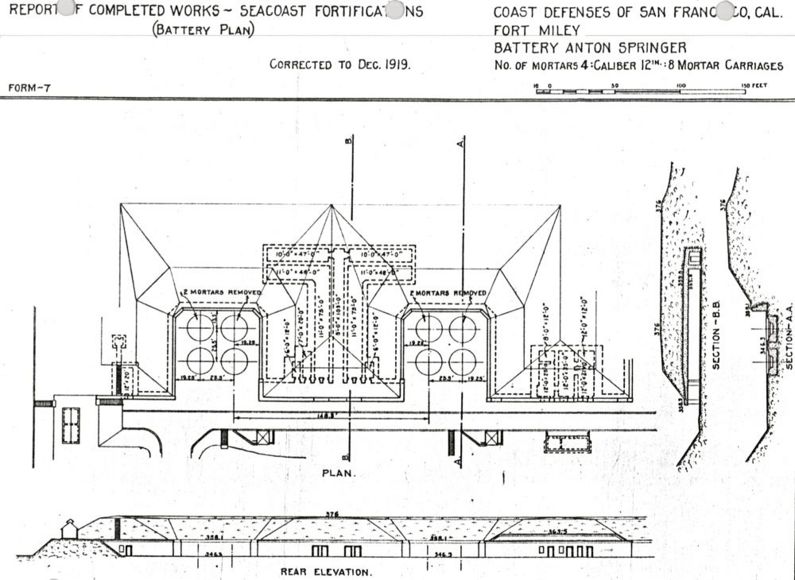
World War I (1917-1918)The U.S. entry into World War I resulted in a widespread removal of large caliber coastal defense gun tubes for service in Europe. Many of the gun and mortar tubes removed were sent to arsenals for modification and mounting on mobile carriages, both wheeled and railroad. Most of the removed gun tubes never made it to Europe and were either remounted or remained at the arsenals until needed elsewhere. On 3 May 1918 Fort Miley was directed to dismount four mortars each from Battery Livingston and Battery Springer and prepare them for shipment. On 18 Jul 1918 a status message indicated that all eight of the mortars had been transferred to service abroad. The gun cards for these mortars indicate that they were transferred 18 Jun 1918 to Morgan Engineering. None of these guns were actually sent abroad because the World War I drew to a close before they could be modified. The carriages for these mortars were removed from the mortar pits but remained at Fort Miley until the general disarmament in 1920 when they were scrapped or broken up for spare parts. In each case the two front mortars were removed from each pit to make more room for more efficient operations. This was a general pattern throughout the coastal artillery mortar batteries. World War II (1941-1945)It was clear that the 12" Endicott Period mortar batteries were obsolete even before World War II so, in the fall of 1942, when the first nationwide scrap drive of the war was organized, much of the obsolete hardware of the Endicott Period was scrapped. Current StatusPart of the Golden Gate Recreation Area (GGNRA) administered by the National Park Service. No period guns or mounts in place. The battery is being used as a storage/maintenance area.
Sources:
Links: Visited: 23 Aug 2009 | ||||||||||||||||||||||||||||||||||||||||||||||||||||||||||||||||||||||||||||||||||||||||||||||||||||||||||
- Harbor Defense of San Francisco
- 12" Mortar M1890MI
- 12" Mortar Battery
- Visited
- All
- California All
- California Battery
- Battery Springer
- Preserved
- Endicott Period Battery
- Coastal Battery
- Fort Miley
- National Historic Site
- California San Francisco County
- 2009 Northern California Trip
- 1942 Scrapping
- 1920 Disarmament Program
